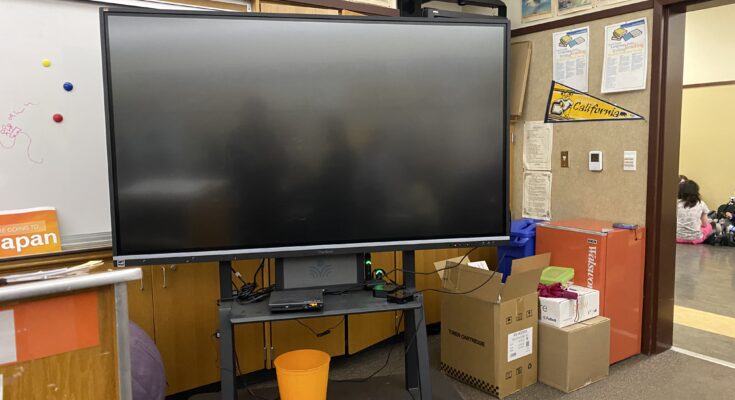By Reid Heavner,
Staff Writer.
Throughout the past few school years, the Santa Rosa City Schools District has implemented a number of changes to our classrooms. Among the most notable was the addition of a massive touch-screen TV to every classroom. The idea was to add a more modern version of a whiteboard that could also be used to view educational videos, share presentations and generally assist in modernizing our teaching methods. While the idea was well-intentioned, it did encounter strong pushback from teachers and staff.
Many teachers objected to these TVs, largely because of the price; the district paid over $3.1 million district-wide for the TVs. In a school system whose budget is decreasing every year due to declining enrollment and lessened state funding, this money is precious to the district. Obviously, this is no small sum and it had the potential to fund many of the programs which we are now losing. For more information on the district’s declining enrollment and ensuing lack of funding, see Lee Corey’s article on Page 2.
For our $3.1 million, what did the district get? Calculus and Statistics teacher Eric Bohn expressed happiness that he had gotten an upgrade to his classroom, but was displeased with how the upgrades were implemented. “I was happy to get technology, but it would’ve been nice to have a little more flexibility in how we mounted it,” said Bohn. Versatility has been a major sticking point for some teachers.
For others, the TVs are just not useful enough to justify their presence. They undeniably take up a lot of space and, in many cases, just sit in the corner of classrooms. The intention of the TVs’ design is ambiguous enough to make them difficult to use. They are short enough for people to use the touch screen feature somewhat easily, but that makes them difficult to use as a viewing device. They’re big enough to make for a theoretically good viewing device, but that makes them difficult to use as a touch-screen device. They try to do both at once, and end up accomplishing neither.
It seems that these devices are a bit of a failed experiment. They were well-intentioned but aren’t practical enough for their price tag. They had some design flaws which made them impractical, and they aren’t used by many teachers. Hopefully we can put our money somewhere more beneficial next time a similar opportunity arises.




